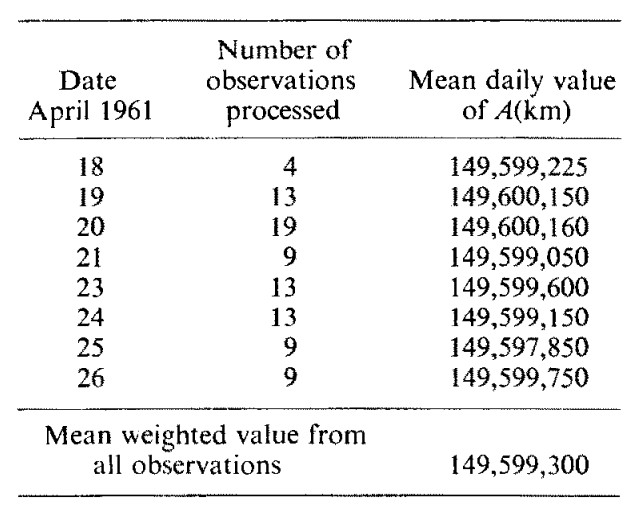From April 18-26, 1961, scientists in the Soviet Union were among the first to bounce a radar signal off the planet Venus. They used the new deep-space telemetry system built in the Crimea to support the failed mars-probe attempt in 1960.
They used the transmitter antenna, operating at 768,719,220 Hz (38.000 cm). Klystron oscillators powered a beam with an intensity of 250 megawatts per steradian. At Venus, a total power of 15 watts struck the planet.
In a total of 89 sessions, a series of pulses were transmitted with circular polarization, then five minutes of reception was recorded. Shown here is one of the wave guides at the focus of a dish, and the wave-guide switch between transmitter and receiver.
Time delay was used to accurately measure the distance to Venus. Newton& #39;s laws are such that the positions in the sky of the planets could be accurately calculated, but the scale of the solar system was ambiguous.
The returning signal was heterodyned down to about 750 Hz and separated into ten 60 Hz frequency bands with a bank of mechanical-resonator filters.
The frequency analysis was used to measure the spread of Doppler shift and thus the rotation speed of Venus. In 1961, this led to a mistaken calculation of a 10-day rotation for the planet.

 Read on Twitter
Read on Twitter









